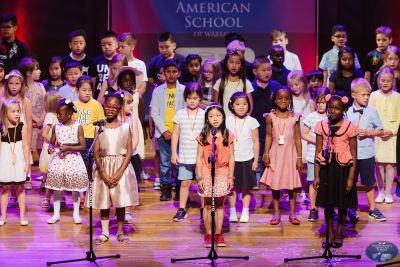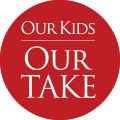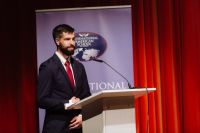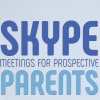- IAS Video Bulletin March 23-27, 2020 (March 23, 2020)
We see ourselves as a partner for our students and their families, and learn from each other in an atmosphere of mutual respect and inspiration. We strive to motivate one another for the goals of individual and collective development. The school’s educational aims are reflected upon regularly and based on shared values of understanding, critical thought, creativity, tolerance, communication, responsibility and integrity.

This is one of the oldest international private schools in Poland. Established in 1989, it’s located in Ursynów, where it has two modern campuses. It has a lower primary school, designed for younger children, from kindergarten to fourth grade, an upper primary school for children in grades 5-6, a middle school for students in grades 7-8, and a high school for students in grades 9-12. The majority of students at IAS are foreigners, but some are children of Poles who are interested in an international education and (possibly) career for their children. The school has a broad-based curriculum, using Polish national guidelines, and combines the best teaching methods and practices from other countries. This allows students to continue their education in many different types of schools, including Polish ones. The language of instruction is English and Polish, but students also have the opportunity to learn additional languages, such as German and French. In the education process, the school also puts emphasis on developing mathematical skills, shaping communication and social skills, and educating students in a spirit of tolerance and cooperation. Thanks to the accreditations of the International Baccalaureate (IB), Cognia and the Polish Ministry of Education, IAS is one of the few schools in Poland that give high school students the opportunity to choose a high school diploma program and qualification: the American High School Diploma and SAT, the IB Diploma Programme or the Polish high school diploma.

Gallery showcasing school life and general photos of International American School of Warsaw.
Central to your child's school experience is the underlying curriculum taught in the classroom. "Curriculum" refers to both what is taught and how it's taught. When considering the different curricula outlined in the next few pages, keep in mind that few schools fall neatly into one category or another. Most schools' curricula comprise a blend of best practices drawn from multiple curriculum types. Having said that, most schools do have a general overall curriculum type. These are identified for each school on OurKids.net.
Primary Curriculum: TraditionalTraditional curricula tend to be very content-based and rooted in the core disciplines. It is a structured approach that involves the teacher delivering a unified curriculum through direct instruction. Uczniowie najpierw zdobywają wiedzę podstawową i teoretyczną, aby później stosować ją w praktyce. Students usually learn by observing and listening to their teacher, studying facts and concepts in textbooks, and completing both tests and written assignments - which challenge students to not only demonstrate their mastery of content but their ability to analyze and deconstruct it critically. Class discussions are also used to create critical dialogue around the content of the curriculum.
Secondary Curriculum: Academic| Focus |
|---|
| Academic |
| Subject type | offered |
|---|---|
| Learning strategy and study counselling; habit formation | |
| Extra support and minor accommodations for children experiencing subclinical difficulties |
| Subject type | offered |
|---|---|
| Accommodations | |
| Modifications | |
| Extra support |
| Special needs | Accomodations
Formal adjustments are made to the delivery of lessons to help mitigate the learning difficulty or exceptionality. The underlying content and expectations remain unchanged with accommodations, however. (Example: allowing a student to write tests in a quieter room). | Modifications The underlying content and expectations are modified and/or simplified for the sake of the student. (Examples: allowing student to use a calculator on a test when other students can’t; allowing students to bring word-banks or “cheat sheets” into certain tests, etc) | Remediation Research-based therapeutic measures that target and ameliorate the underlying weakness. |
|---|---|---|---|
| Learning disabilities | |||
| ADHD (moderate to severe) | |||
| Dyslexia (Language-Based Learning Disability) | |||
| Auditory Processing Disorder (APD) | |||
| Dyscalculia | |||
| Dysgraphia | |||
| Language Processing Disorder | |||
| Nonverbal Learning Disorders (NLD) | |||
| Visual Perceptual/Visual Motor Deficit | |||
| Developmental | |||
| Autism | |||
| Asperger's Syndrome | |||
| Down syndrome | |||
| Intellectual disability | |||
| Behavioral and Emotional | |||
| Troubled behaviour / troubled teens | |||
| Clinical Depression | |||
| Suicidal thoughts | |||
| Drug and alcohol abuse | |||
| Oppositional Defiant Disorder (ODD) | |||
| Physical | |||
| Dyspraxia (Developmental Coordination Disorder) | |||
| Blindness | |||
| Deafness | |||
| Cystic Fibrosis | |||
| Multiple physical |
| Program | offered |
|---|---|
| Full-time gifted program (parallel to rest of school) | |
| Part-time gifted program (pull-out; parallel to rest of class) |
Curriculum delivery: This information is not currently available.
| Program | offered |
|---|---|
| Custom subject enrichment (special arrangement) | |
| Custom curriculum compacting (special arrangement) | |
| Guided independent study (custom gifted arrangement) | |
| Cyber-learning opportunities (custom gifted arrangement) | |
| Formalized peer coaching opportunities (specifically for gifted learners to coach others) | |
| Custom subject acceleration (special arrangement) | |
| Career exploration (custom gifted arrangement) | |
| Project-based learning (custom gifted arrangement) | |
| Mentorships (custom gifted arrangement) |
| Sports Offered | Competitive | Recreational |
|---|---|---|
| Basketball | ||
| Football | ||
| Gymnastics | ||
| Swimming | ||
| Tennis | ||
| Volleyball |
| Clubs Offered |
|---|
| Foreign Language Club |
| Musical theatre/Opera |
| Outdoor Club |
| Outdoor Education |
| School newspaper |
| Student Council |
| Art Club |
| Chess Club |
| Computer Club |
| Grade | PS | 0 | 1 | 2 | 3 | 4 | 5 | 6 | 7 | 8 | 9 | 10 | 11 | 12 |
|---|---|---|---|---|---|---|---|---|---|---|---|---|---|---|
| Day | zł40,000 | zł46,000 | zł54,000 | zł60,000 | zł62,000 | zł66,000 | zł74,000 | |||||||
Discounts
| Discount Type | Enrollment Type | Amount |
|---|---|---|
| 2nd child (sibling) | Day | 5% |
| 3rd child (sibling) | Day | 10% |
| 4th child (sibling) | Day | 15% |
This information is not currently available.
| Grades | Enrollment |
|---|---|
| PS/Kindergarten (3 years) to Gr. 12 | Varies |
| % of foreign students | 60% |
| # of nationalities attending school | 39 |
| PS | 0 | 1 | 2 | 3 | 4 | 5 | 6 | 7 | 8 | 9 | 10 | 11 | 12 |
|---|
| Services | Offered |
|---|---|
| Career planning | |
| Internships | |
| Mentorship Program | |
| University counseling |
| Key Numbers | |
|---|---|
| Average graduating class size | 25 |

International American School (IAS) of Warsaw, Poland was established in 1989 as an elementary school based around an International and American curriculum, catering to the Polish and foreign communities residing in the Polish capital. It is fully accredited by the Polish Ministry of Education (MEN), AdvancED and the International Baccalaureate Organization (IBO).
IAS surpasses Polish and International curricular standards of proficiency in all core subject areas. Qualified American and other International teachers utilize the latest texts and multimedia materials to ensure that our excellent academic standards are maintained.
IAS opened its new permanent facility in the Ursynów District of Warsaw in September of 1994. The school complex consists of two buildings in close proximity. Class sizes are limited to eighteen, and the overall student-to-teacher ratio is 7 to 1. Consequently, we are able to ensure that each child receives individual attention. However, the student to teacher ratio also results in a limited availability of places, given the high demand of families to join our community.

March 23, 2020
IAS Video Bulletin March 23-27, 2020
For the duration of the school closing period, the weekly bulletin will be delivered as a video message from the Principal of IAS ...

March 23, 2020
Virtual Learning at IAS during COVID-19 outbreak
To help you through the school closing period, we have prepared a Virtual Learning Environment (VLE) handbook and screencast. ...

March 23, 2020
Skype meetings for Prospective Parents at IAS during COVID-19 outbreak
If you are interested in enrolling your child or children to IAS, we are at your disposal to set up a Skype meeting with you and your family. ...